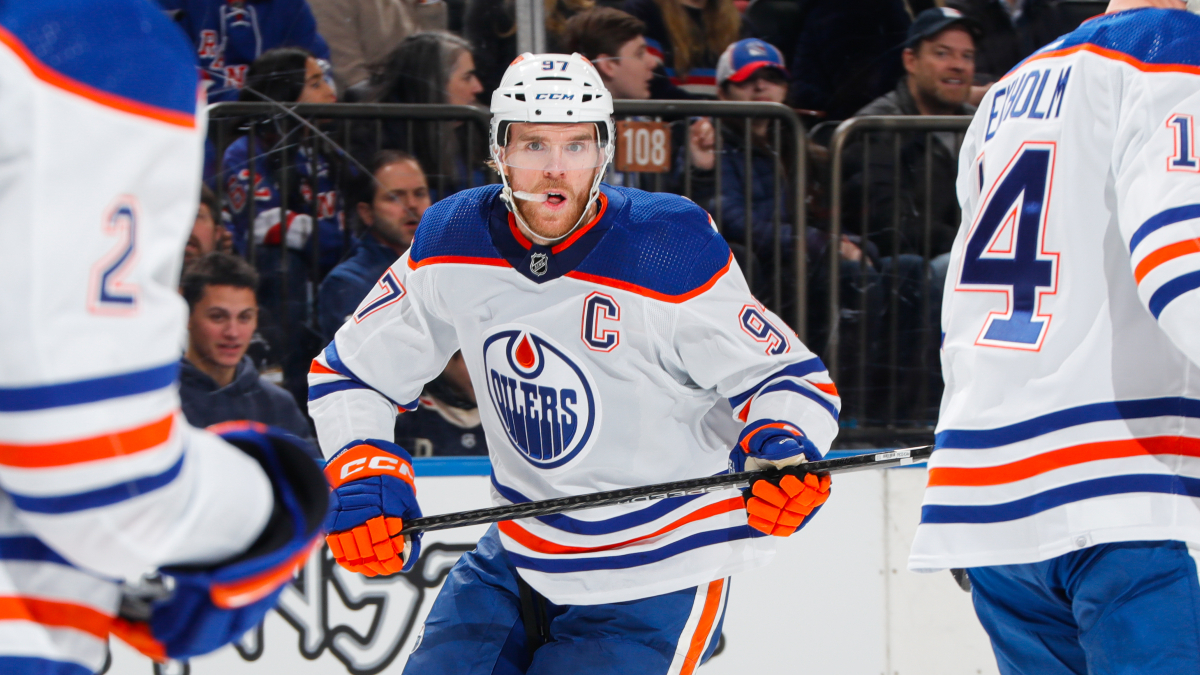What Is a Puck Line in Hockey Betting? -1.5 and +1.5, Explained
Via Jared Silber/Getty Images. Pictured: Connor McDavid #97 of the Edmonton Oilers skates against the New York Rangers at Madison Square Garden on December 22, 2023 in New York City.
The puck line is hockey's form of the point spread.
When betting on a major sport, you're typically presented with three standard betting options: the spread, the moneyline and the over/under.
Hockey is no different, although it is one of a few sports where betting the moneyline, as opposed to the spread, is the most common wager.
You can still bet the spread in hockey, but it's generally not referred to by that name. Instead, it's called the puck line.
What Is the Puck Line in Hockey Betting?
The puck line is the term for the spread betting option in a hockey game. The puck line is -1.5 goals for the favorite and +1.5 for the underdog in every game because hockey is so low-scoring, with varying juice on each side depending on how even the teams are.
The favorite must win by two goals, and the underdog can either win or lose by one goal.
Here's an example from Hurricanes-Rangers, where the moneyline is fairly even.

Because Carolina is favored in the game, they're -1.5 on the puck line. But it pays +210, meaning $10 would win $21. The Rangers are +1.5 at -258, so you'll have to lay $25.80 for every $10 you want to win.
By betting the puck line, bettors can either take a favorite at an increased payout, or increase the likelihood of winning their underdog bet but for a lesser payout.
Here's another example, where the Boston Bruins were a big favorite over the Winnipeg Jets. The odds on the puck line are much closer to even, because it's more likely Boston wins by 2+ goals since they're a big favorite.
| Team | Moneyline | Puck Line |
|---|---|---|
| Jets | +200 | +1.5 (-115) |
| Bruins | -240 | -1.5 (-105) |
In this case, the Bruins are heavily favored, as it would take a $240 bet to win $100 on the moneyline. By taking the puck line, though, Bruins bettors would have to risk only $105 to win $100; of course, they'd need Boston to win by two or more to cash that bet.
On the other hand, the Jets — as +200 underdogs — aren't likely to win this game or even keep it close. The puck line offers Jets bettors a chance to increase their chance of winning the bet, though, as they can win $100 on a $115 bet if Winnipeg can keep the game within a goal.
Should You Bet Puck Lines or Moneylines?
As with most such questions, there isn't an answer to this one that's going to lead to any long-term profits on its own — if that were the case, sports betting would be really easy. However, there are some interesting figures that may be worth keeping in the back of your mind.
Here's a comparison between all puck line and moneyline bets over the past 15 seasons (since 2005) in terms of their return on investment (ROI).
Puck Line Betting ROI by Category
| Team | Moneyline | Puck Line |
|---|---|---|
| Favorites | -1.6% | -2.8% |
| Underdogs | -2.4% | -1.8% |
Obviously, none of the returns are positive, which shouldn't come as a surprise given that it's such a large sample. But interestingly, favorites and underdogs tend to perform inversely based on the bet type.
Favorites have lost less money as moneyline bets, whereas underdogs have performed better on the puck line — which may not be what you were expecting.
Since bettors tend to be attracted to greater payouts, you'd expect to see more puck line bets used on favorites and moneyline bets on underdogs. History, however, suggests that the opposite strategy may be slightly more optimal.
How would you rate this article?




